Transcription of Ileal Conduit as the Standard for Urinary Diversion …
1 Ileal Conduit as the Standard for Urinary Diversion after RadicalCystectomy for Bladder CancerRenzo Colomboa,*, Richard NasprobaDepartment of Urology, University Vita-Salute San Raffaele, Scientific Institute H. San Raffaele, Milan, ItalybUrology Unit, Humanitas Gavazzeni Hospital, Bergamo, recent impressive achievements in radioche-motherapy-related approaches and molecular-based ther-apies, radical cystectomy (RC) remains the electivetreatment for both muscle-invasive bladder cancer (MIBC)and selected non-MIBC cancers[1]. Countless retrospectivestudies unquestionably support RC s excellent oncologicoutcomes and satisfactory postoperative quality of life(QoL) at long-term follow-up. Although much of the clinicalevidence coming from these studies is of low quality, majorinternational guidelines strongly recommend RC as theelective treatment for MIBC[2].
2 Recent improvements in surgical techniques havecontributed to favour the patient s acceptance of thismajor surgery. Technical refinements concerning bothextirpative time, including sexual sparing procedures andreconstructive time with novel surgical solutions to divertEUROPEAN UROLOGY SUPPLEMENTS 9 (2010) 736 744available at homepage: infoKeywords:ComplicationsContinent Urinary reservoirsIleal conduitQuality of lifeRadical cystectomyStomaSurgical anastomosisUrinary bladder neoplasmsUrinary diversionAbstractFor>30 yr, the Ileal Conduit (IC) has been considered the Standard urinarydiversion for bladder cancer patients submitted to radical cystectomy . It is uni-versally recognised as being the most clinically adequate, cost-effective, andreliable solution in the long term.
3 During the last two decades, this surgicalprocedure has been challenged by the dissemination and the excellent clinicaloutcome of bladder substitutions, which gave the surgeon options in supportingthe patient s final this, from a survey of recent literature, IC remainsa widely used Urinary Diversion in most urologic centres. In particular, it is mostfrequent in female patients and in patients>70 yr with high preoperative comor-bidities and unfavourable clinical tumour recovery protocols with standardised perioperative plans of care or fast-track approaches as well as advances in postoperative patient surveillancehave consistently decreased the overall morbidity related to the IC technically simpler to perform when compared with continent reser-voirs, IC has not been associated with lower complications.
4 This can be explainedpartly by the more unfavourable clinical characteristics of patients who undergothe procedure and partly by technical surgical errors. Postoperative complicationsstrictly related to IC contribute to reduce the postoperative quality of life. Thesecomplications include uretero- Ileal anastomotic strictures and stomal, peristomal,and abdominal wall-related complications. Most prospective studies, however,found no difference in overall quality of life when comparing different types oftransposed intestinal segment surgery.#2010 European Association of Urology. Published by Elsevier All rights reserved.* Corresponding author. Department of Urology, Universita` Vita-Salute , Ospedale San Raffaele, ViaOlgettina, 60, 20132 Milano, Italy.
5 Tel. +390226432306; Fax: + Colombo).1569-9056/$ see front matter#2010 European Association of Urology. Published by Elsevier All rights reserved. , have consistently improved the patient s postoper-ative >30 yr, the Ileal Conduit (IC) has been considered the Standard Urinary Diversion method for most patientssubmitted to RC. It is recognised as the most clinicallyadequate, reliable, and cost-effective solution. In the mid-1980 s, the IC was challenged by the introduction of bothorthotopic bladder substitution (OBS) and cutaneouscontinent reservoir concepts[3]. During the last 20 yr, avariety of surgical OBS improvements have been introducedprogressively into clinical practice and proposed more andmore often to bladder cancer patients as the best compro-mise between oncologic radicality and postoperative QoL[4].
6 This surely advocates for reconsidering the role of IC;therefore, the real question is whether IC should still beconsidered the Standard Urinary Diversion procedurefollowing Conduit in the contemporary eraThe IC technique is based on the use of a short segment ofileal bowel to allow urine to traverse the abdominal walland empty through a cutaneous stoma into a dedicatedstoma collection device. The first description of the ICurinary Diversion must be attributed to Seiffert[5]in , the technique was subsequently refined andpopularised by Bricker in the 1950s[6]. Further surgicalvariants, mainly concerning the ileo-ureteral implant,introduced by Wallace[7], Le Duc et al.[8], Saudin andPettersson[9], and Taguchi (see Lee et al.[10]), did notsubstantially change the original technique, whichremained the reference for Urinary Diversion against whichall other types of post-RC surgical solutions have beencompared and the one hand, it has been stated that the majorqualifying points of IC are represented by the relativelysimple surgical technique and the low rate of inherentpostoperative complications.
7 On the other hand, a visiblestoma, the need for lifelong stoma care, and the relatedlimitations in terms of social relationships, lifestyle, andleisure activities are well-recognized disadvantages of thisprocedure[3]. Whether IC is actually an easy-to-performintervention with overall limited postoperative complica-tions remains a questionable issue. The overall long-termfunctional results are far from those expected from an idealprocedure[11], and the presence of a visible or malfunc-tioning stoma could be related to long-life anxiety anddepression[12]. The fact is that dissemination of ICdiversion and its acceptance in socially advanced countriesremain to a recent report by the Urologic Diseases inAmerica Project[13], among 27 494 patients submitted toRC between 2001 and 2005 from the Nationwide InpatientSample, 4539 ( ) underwent a continent urinarydiversion and 22 955 ( ) underwent an IC.
8 Interesting-ly, a significant trend towards the more liberal use of the ICduring the last few years has been registered in some UScontexts. The monoinstitutional report by Lowrance et al.[14]showed that OBS accounted for 47% of all urinarydiversions in 2000 and for only 21% in 2005. Likewise, therecent study by Manoharan et al.[15]showed that of allpatients (mean age: 69 yr) submitted to RC between 1992and 2007 at a department of urology in Miami, Florida, 56%underwent IC and 41% underwent OBS. The trend is similarin many European contexts. The Swedish Bladder CancerRegister study was completed by including>90% of allpatients with newly diagnosed bladder cancer treatedwith RC between 1997 and 2003, and IC and continentreconstruction were accomplished in 64% and 36% of cases,respectively[16].
9 Likewise, the German population-basedstudy by Bader et al.[17]showed that IC was selected in upto 64% of overall cases after cystectomy . Similarly, a Frenchnational survey published in 2008 by the French Associationof Urology confirmed the IC as the most frequent post-RCurinary Diversion (84%)[18].This scenario seems to contrast with that at somereference centres where, in the same period of time, a muchhigher percentage of patients underwent OBS (Ulm, 66%;Bern, 54%; Mansoura, 39%[19]). It clearly emerges thatcontinent reconstructions are more often completed atacademic departments than at county hospitals, demon-strating a substantial provider influence on the choice ofpost-RC surgical report published in 2007 by the members ofConsensus Conference on Bladder Cancer and the Socie te Internationale d Urologie, including>7000 patients from 13urologic departments[3], probably reflects the currentdistribution in the frequency of Urinary diversions atreference centres.
10 In this report, OBS accounted for 47%(30 66%) and IC accounted for 33% ( 64%). It is evidentthat the rate of patients submitted to any kind of diversionvaries widely among high-volume institutions, and verylittle is known about the reason for this variation. The samestudy showed that surgical solutions different than IC andOBS are used only marginally in most urologic departments:anal Diversion (10%), continent cutaneous Diversion (8%),and incontinent cutaneous Diversion (2%). When analyzingthe mentioned studies, and regardless of the characteristicsof the urologic centres, IC unquestionably remains the mostfrequent approach in female patients and in those>75 yrwith less favourable TNM preparationA complete preoperative anaesthesiologic assessmentincluding cardiac testing, renal and hepatic function, andcorrection of modifiable medical disease such as hyperten-sion, cardiac arrhythmias, and anaemia should be complet-ed in all patient candidates for the last decade, enhanced recovery protocolswith standardised perioperative plans of care or fast-track (FT) schedules have also emerged as tools to assist RCpatients.


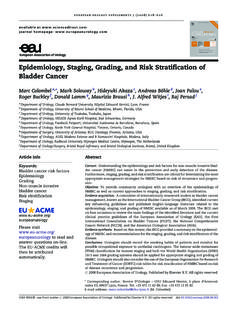
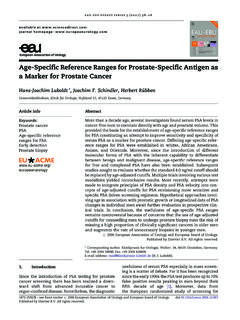

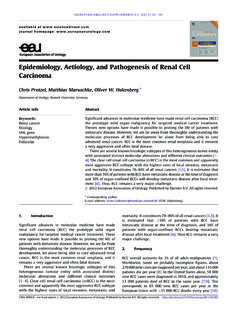



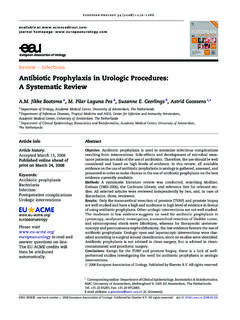

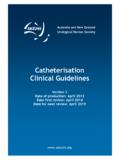
![Index [www.anzuns.org]](/cache/preview/e/5/e/3/7/9/a/a/thumb-e5e379aa8a69f70103ce934b4a1e24f2.jpg)

